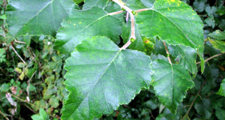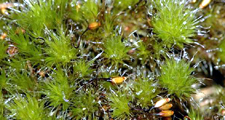Upland Oak Birch Woodland – W11
Quercus petraea – Betula pubescens – Dicranum majus woodland.
Region
A scattered distribution in the North Pennines, Coalfield Pennine Fringe, Pennine Dales Fringe. Formerly more widely distributed.
Character
Existing woodlands are typically small woodlands of steep valley slopes & gills or the upper margins of gill & gorge ash woods marking the transition to more acidic soils.
Geology
Base poor superficial deposits including boulder clays, fluvio-glacial sands & gravels.
Soils
Base poor brown earths. Podzolic brown earths.
Species
Downy Birch and Sessile Oak are the dominant species. The understorey is sparse with Hazel, Rowan and Holly common.
Ground Flora and Fauna
Bluebell, Primrose, Pignut, Wood Sorrel, Bluebell, Wood Anemone, Wood Sage, Creeping Soft-grass.
Structure
Semi-natural woodlands have little species diversity and are often dominated by Oak where they have been coppiced or birch where under managed or disturbed and have often been influenced by grazing. The canopy is often low (<10m) and relatively open, and trees are often multi-stemmed.
Management Principles
- Prevent grazing by livestock or browsing by deer – particularly in small woods.
- Maintain and increase the numbers of old trees and dead wood.
- Progressively remove non-natives at a pace flora & fauna can adapt to.
- Restore coppicing only where its history is well established and the effects on existing flora & fauna are understood.
- Low intervention approaches are best for small woods.
- Timber production – minimise the scale of disturbance.
- Use low-key establishment techniques – particularly natural regeneration.
- Increase species diversity in species poor woods.
- When planting is necessary use only native species of local origins.
Planting sites for new woods
Moderately acidic upland and upland fringe sites. Reclaimed sites on moderately acidic soils.
Design principles
Planting mixtures dominated by Birch and Oak with smaller numbers of Hazel, Holly and Rowan.
Further information
Forestry Commission Forestry Practice Guide 5: Upland Oakwoods can be downloaded from Forestry Commissions Publications pages.



